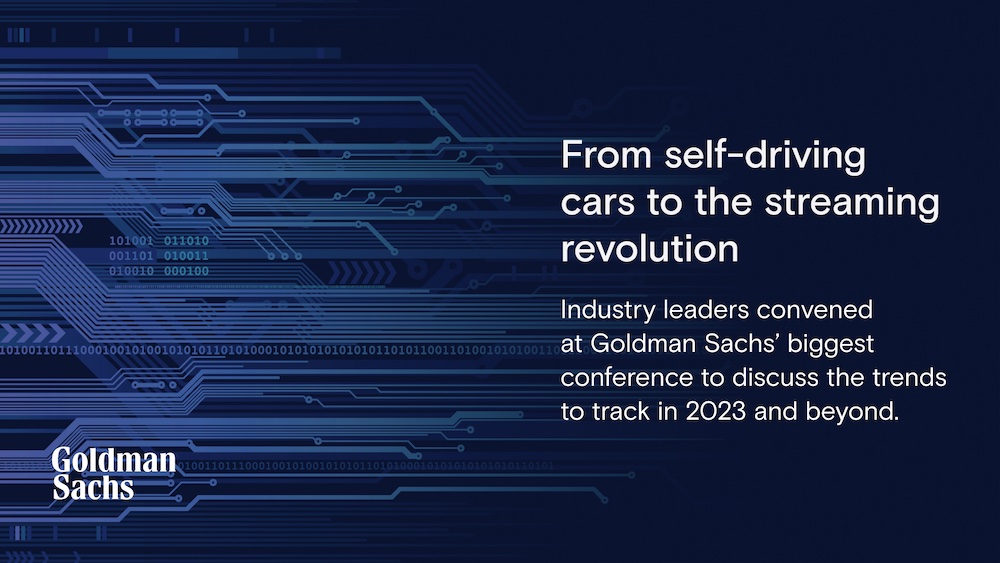| | | | | | | Presented By Goldman Sachs | | | | Axios Markets | | By Emily Peck and Matt Phillips · Oct 13, 2022 | | 🐻 Good morning. Congrats to this year's Fat Bear Week champion, who overcame a voting scandal to claim the prize for the second time. Folks, we'll get a new inflation number in just one hour. Reading today's 1,191-word missive will take you 4.5 minutes. Let's get into it. | | | | | | 1 big thing: Earnings season's macro signals |  | | | Illustration: Eniola Odetunde/Axios | | | | Third quarter earnings are about to kick into high gear — and amid the "will-we-or-won't-we" recession question, we'll be looking for signals from corporate America about the economy's health, Axios' Kate Marino writes. Why it matters: The Fed's trying to engineer a soft landing, and the pending Q3 results will paint a picture of how companies are handling that so far. - "Right now, the macro is a really big driver," says Tim Murray, capital market strategist in T. Rowe Price's multi-asset division.
Be smart: With recession fears on full boil, companies with big earnings misses may take the opportunity to blame the macro environment (including a soaring U.S. dollar). - Some cases may be legit — but others, not so much.
- How to tell the difference? See how they line up against peers in their industry, says Raheel Siddiqui, senior research analyst at Neuberger Berman.
Context: Consensus S&P 500 earnings expectations are for year-over-year growth of 2%-3%. - That's down from the 9.9% expected growth as of June 30 — and is the lowest expected growth since Q3 2020, Brad McMillan, chief investment officer for Commonwealth Financial Network, wrote in a research note.
A few signals to watch include ... The labor market tightrope: In its fight against inflation, the Fed wants to cool the job market — but not too much. Best case scenario would be execs talking about hiring reductions or freezes rather than actual layoffs, Murray says. - For any individual company, hiring pullbacks could be a sign of problems — "but if we're seeing that broadly, it's a good outcome for the economy," he adds.
Capital spending: As of Q2, companies' capital spending was growing by roughly 20% year over year, according to BofA Research calculations. That's likely to decline, in no small part thanks to the higher rates engineered by the Fed, Siddiqui says. The question is by how much? - If growth goes to low single digits or worse, it's a sign that recession may be close at hand, he adds. "Capex is one of the last things to slow ... it's the dust after the car has left."
Zoom in: For individual companies and their stock performance, all eyes are on margins and guidance. - Investors will be watching for which companies were able to maintain or improve margins.
- Meanwhile, expect companies with negative guidance (or none at all) to be punished in the markets. Those with positive guidance will need a compelling story to back it up, Murray says.
Worth noting: The strong dollar will be a player this quarter, eroding the value of foreign earnings. What's next: Bank earnings start tomorrow with JPMorgan Chase, Citigroup and Wells Fargo, among others — and next week over 300 companies are set to report. |     | | | | | | 2. Catch up quick | | ✈️ Delta reports strong third-quarter earnings on "tremendous demand." (Yahoo) 🛑 FCC poised to ban all U.S. sales of new Huawei and ZTE equipment over national security concerns. (Axios) 🛢 OPEC+ oil supply cuts could tip the world into recession, IEA says. (Reuters) |     | | | | | | 3. Why your boss can't quit you |  Data: FRED, BLS; Chart: Simran Parwani/Axios Companies might have learned a lesson from the mass firings of March and April 2020: Think twice before pulling the layoff trigger, Emily writes. Why it matters: That's one increasingly popular explanation for the historically low level of layoffs and unemployment in the U.S. economy. - The popular term for the theory is "labor hoarding," and economists and finance writers started speculating about it in the summer.
Zoom out: The phenomenon might mean that even as the Federal Reserve increases interest rates to fight inflation and cool the economy — it won't trigger the kind of job loss that happened decades ago when Fed chair Paul Volker used the same playbook and drove unemployment over 10%. Between the lines: There's no hard and fast indicator that would definitively show that hoarding is happening, but there are ways to suss it out, Kathryn Anne Edwards, an economist at the Rand Corporation, tells Axios. - Some of those metrics, like a low level of layoffs and a high level of job openings, are clearly happening now, she says.
- Another sign would be if workers aren't getting as many hours as they want from employers — a signal that companies are hanging on to more folks than they might actually need.
- There is some anecdotal evidence there, too, she says, but it's not yet showing up in a BLS statistic that specifically tracks that measure.
- Companies will also provide clues this earning season, as Kate writes above.
The big picture: Companies laid off an extraordinary 22 million people in March and April 2020. - "It turns out that when you lay off 22 million people and send them into the labor market, they might not come back," Edwards says.
Yes, but: Employers had a hard time rehiring and retraining into the super-fast economic recovery; many are still short workers. So, it's possible they're not really hoarding yet — just trying to get back to some equilibrium. - As I wrote earlier this week, that's a lesson learned in the freight rail industry, which is now rethinking its go-to playbook of layoffs in a downturn.
Go deeper. |     | | | | | | A message from Goldman Sachs | | Top execs in media and tech share the trends to watch | | |  | | | | Leaders and pioneers from telecoms, media and technology convened at Goldman Sachs' biggest conference, Communacopia + Tech 2022, to discuss the trends to track in 2023 and beyond. Where do they think innovation will drive growth? We've captured the conversations. Watch here. | | | | | | 4. ARK runs aground |  Data: FactSet; Chart: Axios Visuals The flagship fund run by Cathie Wood, who single-handedly revived the notion of a celebrity stock picker during the wildest days of the COVID-era market mania, is now barely running even with the plain vanilla S&P 500, Matt writes. Driving the news: Wood's flagship ARK Innovation ETF is down roughly 62% this year, and nearly 80% from its peak in February 2021. - Both the S&P 500 and ARK Innovation are up 77% since the fund went live in late October 2014. (Hat tip to Willie Delwiche, an analyst at All Star Charts, who spotlighted the above chart on Twitter.)
Why it matters: Wood — and her range of innovative ARK-branded actively managed ETFs — are a stand-in for the trillions of dollars worth of investments in unprofitable tech companies over the last few years. - Buying such stocks made traders look like geniuses when interest rates were near zero.
- That's because these kinds of "growth stocks" — also often known as "unprofitable" companies — tend to be very sensitive to interest rates.
- When rates fall, they surge, and vice versa.
Between the lines: You could have seen this coming. Wood has a long history in the money management industry — and a reputation for aggressive bets on emerging technologies that often resulted in periods of outperformance followed by faceplants. We're currently at the latter stage. |     | | |  | | | | If you like this newsletter, your friends may, too! Refer your friends and get free Axios swag when they sign up. | | | | | | | | 5. Billion-dollar trend |  Data: Climate Central, NOAA National Centers for Environmental Information; Note: Includes damages that equal or exceed $1 billion (adjusted for 2022 inflation). Average is from 1980-2022; Chart: Axios Visuals Hurricanes Fiona and Ian were the latest in a torrent of billion-dollar weather and climate disasters — a total of 15 so far this year — to strike the U.S., according to new NOAA data, Axios' Andrew Freedman writes. The big picture: The cost and frequency of these disasters have increased in recent years. - According to Climate Central, a research and communications nonprofit, the frequency of billion-dollar weather disasters is now about one event every 18 days.
- This compares to 82 days between such disasters in the 1980s, Climate Central found.
Zoom in: Early estimates from Hurricane Ian damage surveys indicate it was one of the costliest storms in U.S. history, with insured losses of $53 billion to $74 billion. |     | | | | | | A message from Goldman Sachs | | Top execs in media and tech share the trends to watch | | |  | | | | Leaders and pioneers from telecoms, media and technology convened at Goldman Sachs' biggest conference, Communacopia + Tech 2022, to discuss the trends to track in 2023 and beyond. Where do they think innovation will drive growth? We've captured the conversations. Watch here. | | | | Was this email forwarded to you? Sign up here! Today's newsletter was edited by Kate Marino and copy edited by Mickey Meece. |  | | Why stop here? Let's go Pro. | | | | | | Axios thanks our partners for supporting our newsletters. If you're interested in advertising, learn more here.
Sponsorship has no influence on editorial content. Axios, 3100 Clarendon Blvd, Arlington VA 22201 | | | You received this email because you signed up for newsletters from Axios.
Change your preferences or unsubscribe here. | | | Was this email forwarded to you?
Sign up now to get Axios in your inbox. | | | | Follow Axios on social media:    | | | | | |












No comments:
Post a Comment